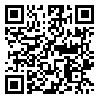BibTeX | RIS | EndNote | Medlars | ProCite | Reference Manager | RefWorks
Send citation to:
URL: http://jdisabilstud.org/article-1-2207-en.html
2- Professor of Speech Therapy, Iran University of Medical Sciences, Tehran, Iran
3- Professor, Department of Psychology, University of Tabriz, Tabriz, Iran
Abstract
Background & Objectives: One of the components affected by coronary heart disease is trait anxiety. State anxiety is associated with the arousal of the autonomic nervous system and is also dependent on specific situations. In contrast, trait anxiety is a stable personality trait related to individuals' readiness and desire to experience anxiety. One of the symptoms that may increase under the influence of disease is the impulsivity of people with coronary heart disease. Impulsivity is defined as an immediate action, lack of focus on the activity at hand, and lack of planning and thinking, as well as being prepared and part of a pattern of behavior and not a single action. It is necessary to help people with coronary artery diseases to know the factors affecting state–trait anxiety and impulsivity. This study aimed to determine the effectiveness of compassion–based therapy on state–trait anxiety and impulsivity symptoms in patients with coronary heart disease.
Methods: The present study was applied research and, in terms of method, quasi–experimental with a pretest–posttest and follow–up design with a control group. The study's statistical population included all patients with confirmed heart diseases hospitalized in Tabriz Madani Cardiovascular Hospital in the internal ward of heart diseases (men and women) between January and March 2017. The study sample included 40 patients with cardiovascular diseases selected by purposive sampling and randomly divided into two groups (self–compassion therapy, 20 patients) and a control group (20 patients). The required number of samples was calculated based on similar studies, considering the effect size of 0.40, confidence level of 0.95, test power of 0.80, and the rate of drop of 10% for each group. The inclusion criteria were as follows: aged 30 to 60 years, sufficient literacy, ability to listen normally, and conscious consent to attend treatment sessions. The exclusion criteria were as follows: the presence of mental disorders requiring immediate treatment, disruption of the normal treatment process, lack of cooperation, and severe physical disability. Data in the pretest, posttest, and follow–up phases in the two groups were obtained using the Impulsivity Scale (Barrat, 1994) and State–Trait Anxiety Inventory–Revised (Spielberger & Vagg, 1984). Compassion–based therapy was implemented in twelve 60–minute sessions once a week for three months based on Gilbert's training package (2009). No intervention was implemented for the control group. After six months, the follow–up test was performed again for both groups. In the descriptive statistics, central and dispersion indicators such as mean and standard deviation were used. In the inferential statistics, the Chi–square test, analysis of variance with repeated measurements, and Bonferroni's post hoc test were calculated using SPSS version 22 software. The significance level of the tests was considered 0.05.
Results: The variance analysis of the impulsivity variable was significant for the effects of group, time, and time*group (p<0.001). The variance analysis of the state–trait anxiety symptom was significant for the effects of group, time, and time*group (p<0.001). The results showed that the impulsivity variable scores in the experimental group in the posttest were significantly lower than those in the pretest (p<0.001). The results revealed that impulsivity in the follow–up phase was significantly different from the pretest (p<0.001). Also, a significant difference was observed between the posttest and follow–up (p<0.001). In addition, the results showed that the variable scores of state–trait anxiety symptoms in the experimental group and in the posttest stage were significantly lower than those in the pretest (p<0.001). Trait–state anxiety symptoms in the follow–up phase differed significantly from the pretest (p<0.001). Also, a significant difference was observed between the two stages of posttest and follow–up (p<0.001). Therefore, the effectiveness of compassion–based therapy was sustained in the follow–up phase for both state–trait anxiety symptoms and impulsivity.
Conclusion: Based on the findings of this study, self–compassion therapy is effective in state–trait anxiety and impulsivity symptoms in patients with coronary heart disease. Self–compassion therapy can improve state–trait anxiety and impulsivity symptoms in patients with coronary heart disease.
| Rights and permissions | |
 |
This work is licensed under a Creative Commons Attribution-NonCommercial 4.0 International License. |





